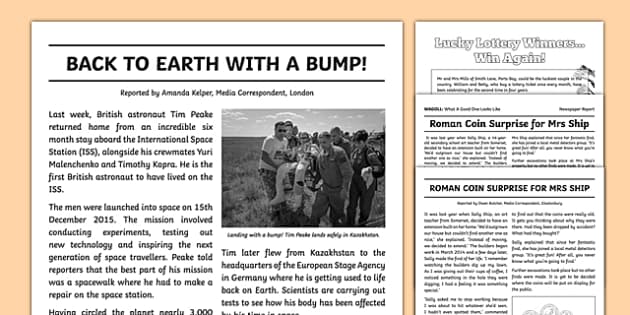3 Easy Facts About News Articles Shown
Table of ContentsThe Of News ArticlesThe 10-Second Trick For News ArticlesWhat Does News Articles Mean?News Articles Things To Know Before You BuyNot known Details About News Articles
Good understanding of different topics offers pupils an one-upmanship over their peers. Even though digital and social media sites are readily easily accessible, we ought to not forget how essential it is to check out the papers. Parents need to try and instill the habit of reading a paper as a day-to-day regimen to proceed the heritage of the revered print medium.Information tales also have at the very least one of the complying with crucial characteristics relative to the desired audience: distance, importance, timeliness, human interest, oddity, or effect. The relevant term journalese is occasionally used, typically pejoratively, to describe news-style writing. Another is headlinese. Papers typically stick to an expository writing design.
Within these limits, information stories also aim to be detailed. Amongst the larger and a lot more revered papers, fairness and balance is a significant element in offering info.
Papers with a global target market, as an example, tend to make use of an extra formal style of writing. The certain options made by an information electrical outlet's editor or content board are often collected in a style overview; typical design overviews include the and the United States Information Design Publication. The major objectives of information writing can be summarized by the ABCs of journalism: accuracy, brevity, and clarity.
An Unbiased View of News Articles
As a policy, reporters will certainly not use a long word when a short one will certainly do. Information writers try to avoid making use of the very same word much more than when in a paragraph (occasionally called an "resemble" or "word mirror").
Nonetheless, headings in some cases omit the subject (e.g., "Jumps From Watercraft, Catches in Wheel") or verb (e.g., "Cat female fortunate"). A subhead (also subhed, sub-headline, subheading, caption, deck or dek) can be either a secondary title under the major headline, or the heading of a subsection of the post. It is a heading that precedes the primary message, or a team of paragraphs of the primary text.

Added billboards of any of these kinds may appear later on in the short article (particularly on succeeding pages) to tempt further reading. Such signboards are likewise made use of as tips to the post in other areas of the publication or site, or as promotions for the item in other magazine or websites. Normal framework with title, lead paragraph (summary in bold), various other paragraphs (information) and get in touch with information.

Example of a hard-lead paragraph NASA is recommending another room project. The budget requests around $10 billion for the task.
The NASA statement came as the agency asked for $10 billion of appropriations for the project. An "off-lead" is the second essential front page information of the day. The off-lead appears either in the top left edge, or straight below the lead on the right. To "bury the lead" is to begin the article with background information or information of second relevance to the viewers, compeling them to review more deeply right into an article than they need to need to in order to discover the essential factors.
News Articles Things To Know Before You Get This
Usual use is that Homepage or more sentences each blog here create their very own paragraph. Reporters usually define the organization or structure of a newspaper article as an upside down pyramid. The crucial and most interesting elements of a story are placed at the beginning, with supporting details complying with in order of diminishing importance.
It permits individuals to discover a topic to just the depth that their curiosity takes them, and without the imposition of details or subtleties that they could take into consideration unnecessary, yet still making that info offered to much more interested viewers. The upside down pyramid framework additionally makes it possible for write-ups to be trimmed to any type of arbitrary length throughout design, to suit the area readily available.
Some authors begin their tales with the "1-2-3 lead", yet there are lots of kinds of lead available. This format invariably starts with a "5 Ws" opening up paragraph (as explained over), adhered to by an indirect quote that offers to support a major element of the very first paragraph, and afterwards a straight quote to support the indirect quote. [] A see here now kicker can describe multiple points: The last tale current program; a "satisfied" tale to end the program.
Longer write-ups, such as publication cover write-ups and the pieces that lead the inside areas of a paper, are known as. Function tales vary from straight information in a number of methods.
All about News Articles
An attribute's first paragraphs typically associate an interesting minute or occasion, as in an "unscientific lead". From the details of an individual or episode, its view swiftly widens to generalities concerning the tale's topic.

The Editor's Tool kit: A Recommendation Guide for Beginners and Professionals (2001) Allan M. Siegal and William G. Connolly. The New York City Times Handbook of Style and Usage: The Authorities Design Guide Utilized by the Writers and Editors of the World's Most Reliable Newspaper (2002) M. L. Stein, Susan Paterno, and R.